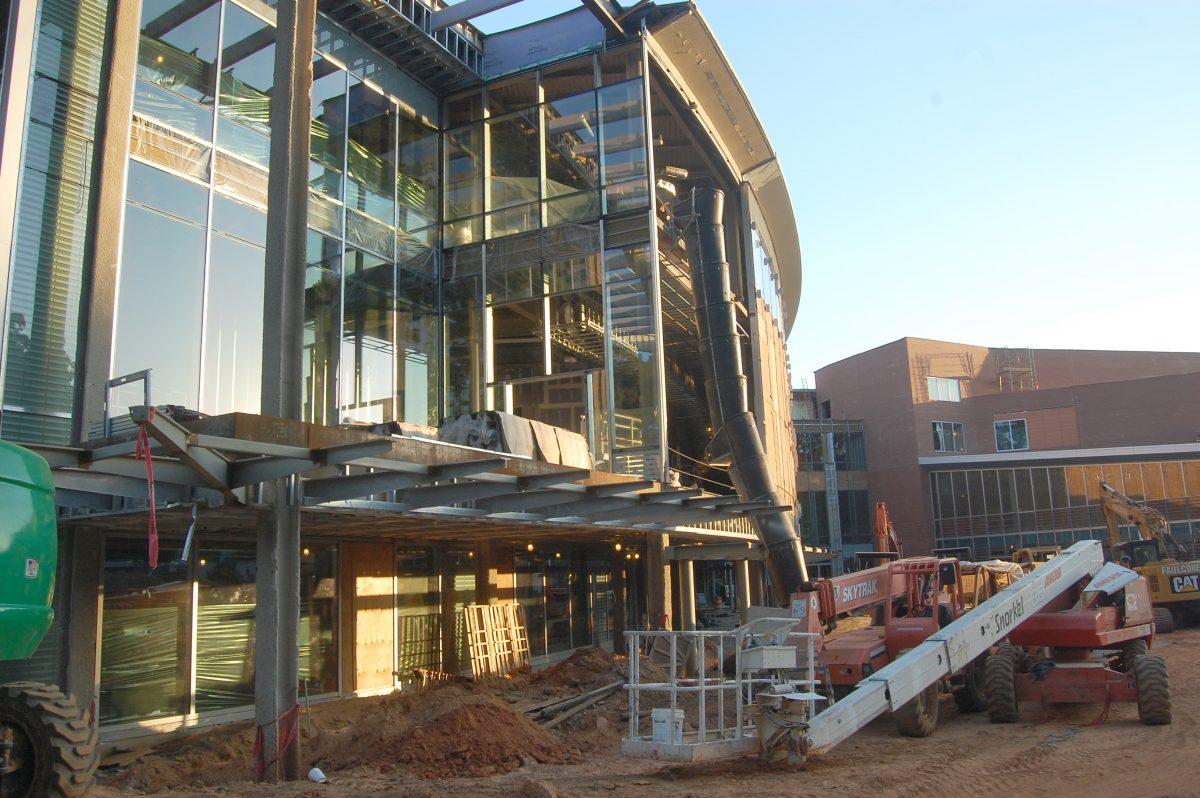N.C. State is often praised for its affordability or its College of Veterinary Medicine, but it is rarely recognized for having an aesthetically pleasing campus.
Many lists have been made to assess how attractive various college campuses are. Unfortunately however, N.C. State does not appear on such lists. Instead, the University has made its way onto several lists of the ugliest campuses, compiled by websites, such as Campus Squeeze and BroBible.com.
However, the Facilities Division and the rest of the N.C. State community are trying to change the University’s reputation as a visually unappealing campus despite a decrease in state funds.
According to Kevin MacNaughton, associate vice chancellor of facilities at N.C. State, the University has made improvements to beautify its campus during the last few years.
“I think N.C. State has really come a long way in the past decade to become a more aesthetically pleasing campus,” MacNaughton said. “We’ve focused on making the spaces between buildings more inviting and eye appealing. I think that’s had a tremendous impact, and is something students feel good about.
While facilities plays a crucial role in renovating old buildings and building new ones, construction projects are a campus wide effort that even extends to the Raleigh community, according to MacNaughton.
First, the University creates a “master plan”, which is largely led by Chancellor Randy Woodson. Then, campus leaders also consider enrollment growth projections, and space inventory, which evaluate the campus as a whole.
“It’s important to point out that facilities doesn’t really create the agenda for where N.C. State is headed (in terms of construction),” MacNaughton said. “We certainly facilitate and carry it out but it’s really a campus-wide thing.”
One of the most prominent projects undertaken by facilities in recent years, along with the James B. Hunt Library, is the new Talley Student Center.
Phase I of Talley construction, which will include the center’s food vendors, is on schedule and is set to open early in the Fall 2013 semester despite an abundance of rainy days this spring.
MacNaughton said the project was likely to be delayed if not for the cooperation of the facilities department, construction contractors and designers.
“We have a great team,” MacNaughton said. “Were really exited to have it open for students to enjoy next semester, its going to really create a great place.”
The new Talley Center is expected to cost $120 million, and will be paid for by student fees, retail revenue and other sources, according to the N.C. State website.
This represents a change in funding for University construction projects, which was previously funded primarily through the state government.
Referring to a University study in the 1990’s, MacNaughton said construction at N.C. State long term used to be funded about 60 percent by the state, and 40 percent from student fees and other sources.
However, since 2008 the state government has cut its spending on the University, and now construction projects must get money elsewhere.
“The state has really been in a major budget strain so the funding for projects that come from the state have really diminished to really nothing since then,” MacNaughton said.
Budget cuts have also led to vacant buildings and stalled projects.
For example, Broughton Hall was supposed to be renovated for the chemistry department. However, there wasn’t enough funding for the project, and the building was vacated when engineering building III was built on Centennial campus, according to MacNaughton.
While certain projects are being left in the background on main campus, there are several ventures underway on Centennial campus.
A portion of undergraduate student housing will be opening for the Fall 2013 semester, with the other part opening the following year.
MacNaughton said this project has the potential to revolutionize student life on Centennial.
“Right now Centennial isn’t a campus (undergraduate) students live at, they commute to it,” MacNaughton said. “This will be the first time we’re going to have residence halls for students on the campus, so it’s going to be more of a 24/7 type place than a 9-5 place, especially with the Hunt library.”
The facilities department is also focusing on things that aren’t obvious to students, like sustainability.
According to MacNaughton, a project was started two years ago that attempted to create more efficient power sources.
Part of the University’s sustainability efforts involved replacing 50-year-old water boilers, and that, along with other sustainability projects has, “totally paid for itself from energy it creates,” MacNaughton said.








